
Top 10 Ancient & Historic Sites in the Eastern Mediterranean



History is one of the biggest draws of an Eastern Mediterranean cruise, as long as you can see past the glimmering blue seas and beautiful beaches. Ancient ruins and historical sites dating back hundreds and thousands of years are found across the entire region, and few cruise destinations can rival its cultural riches.
The Eastern Mediterranean has been home to Jews, Christians, Muslims; ancient Minoan, Greek and Roman civilizations; the Byzantine and Ottoman empires; and countless other waves of humanity over the millennia. The legacy of those cultures has shaped landscapes, cities, religions and Western civilization.
Today, Eastern Mediterranean cruises typically take in Cyprus, Greece, Turkey, Croatia, Italy, and the Holy Land. From the Acropolis in Athens to the mosques of Istanbul, take a step back in time with our choice of the top 10 historic and ancient sites in the Eastern Mediterranean.
If you're a history buff, take a look at our list of the best cruises for history lovers and see where else in the world you might like to visit for your cultural fix.
Athens (Piraeus), Greece: Acropolis
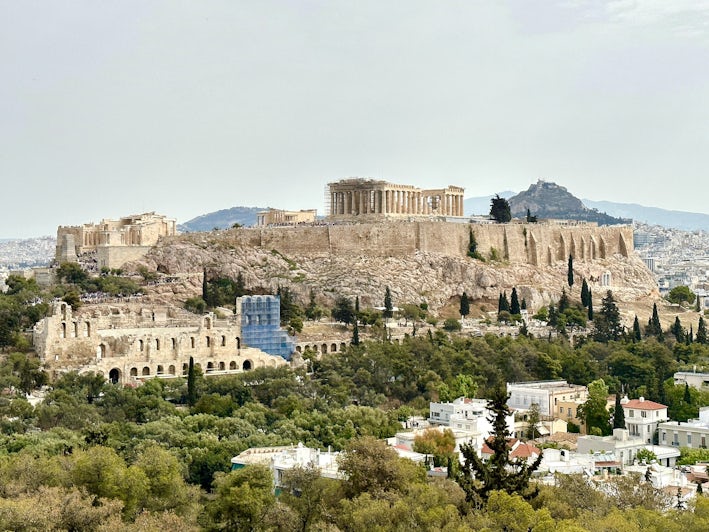
The Acropolis, overlooking Athens, is among the most recognizable historic sights in the world and an astonishing remnant of ancient Greece. It's place in Western history can't be overstated.
Meaning "high city," the Acropolis was first inhabited in Neolithic times, and people lived there until 510 BC when it was declared that it should be the abode of the gods. The site includes the immediately recognizable Parthenon temple, built for the goddess Athena.
You'd do well to also visit the magnificent Acropolis Museum, which opened in 2009. If you're not joining a guided tour, a combined ticket provides entry to the Acropolis and museum. For the best views of the Acropolis, try heading to the Philopappos Monument on the hill to the west of the historic site.
Tip: Wear flat, rubber-soled, closed-toe shoes or sneakers, as the marble and stone paths can be slippery, uneven and steep in spots.
Venice, Italy: Piazza San Marco (St Mark's Square and Basilica)
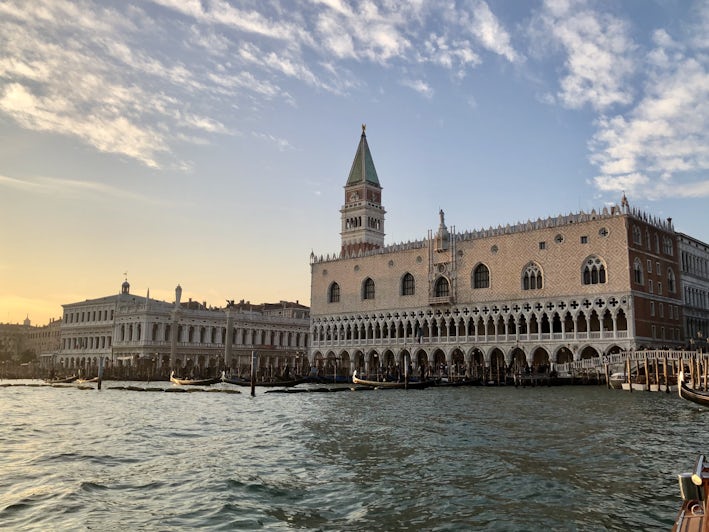
Built on islands and criss-crossed by bridges, Venice itself is an open-air museum. Nearly every square foot (or meter) has some historical story or stops you dead in your tracks with beauty (if you can ignore the crowds).
Piazza San Marco (St Mark's Square) — the grandest plaza in Venice — is dominated by the basilica of the same name. A stunning example of Byzantine, Gothic and neoclassical architecture, it incorporates details from antiquity to the Middle Ages. These include some of the oldest known exterior mosaics, dating back to the 13th century; a fabulous gold interior symbolizing the divine light of God; and an intricately patterned mosaic and marble floor.
In total, there are more than 85,000 square feet of mosaics in St Mark's — enough to cover over 1.5 American football fields. You can also take an elevator to the campanile (bell tower) just across the plaza for incredible Venice, basilica and piazza views.
Tip: Do yourself a favor and buy tickets online ahead of time. Venice is wildly popular, and lines and crowds are the norm (especially in the summer).
Istanbul, Turkey: Hagia Sophia, Grand Bazaar and the Golden Horn
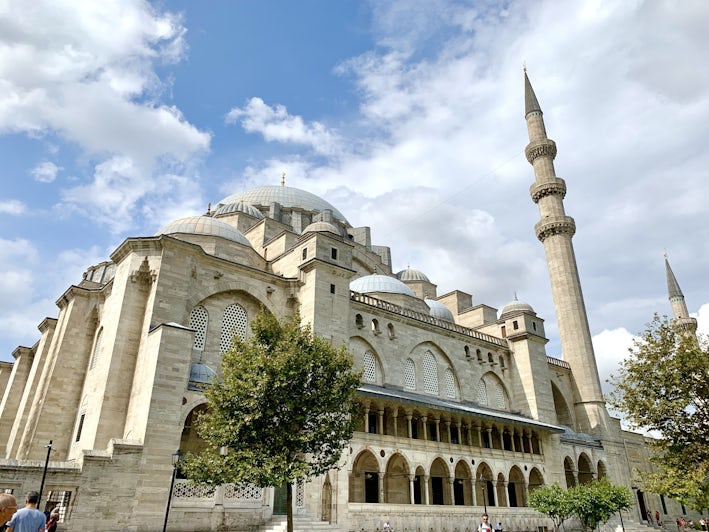
Istanbul is, without a doubt, one of the most dazzling cities in the world. Spanning Europe and Asia, this massive metropolis has existed under various names since the 7th century BC.
While the list of things to see and do (and eat) in Istanbul is too massive for any port visit, cruisers would do well to concentrate on the historic Golden Horn (also called Sultanahamet). Here you'll find the lion's share of Istanbul's marquee sights.
Hagia Sophia likely needs no introduction, and is one of the most important landmarks in the Eastern Mediterranean. Originally a Byzantine Christian church, it then was a mosque, a museum, and — now — a mosque once more. The Suleymaniye Mosque is equally beautiful, and its peaceful, ornate interiors are welcome contrast to the crowds at Hagia Sophia. Take one look up at the dome and try to keep your jaw in place.
After dipping your toe into Istanbul's landmarks, head to the dizzying Grand Bazaar and ancient hammams of the area. If you have time, book a ticket for one of the "whirling dervish" Sufi prayer ceremonies performed by endlessly spinning men in their white robes and tall white caps.
Tip: Remember that shoulders and knees must be covered in Islamic holy sites and mosques. In the interest of attracting less unwanted attention, just opt for long pants or skirts. Women will need to bring a head scarf as well.
Dubrovnik, Croatia: Old City Walls
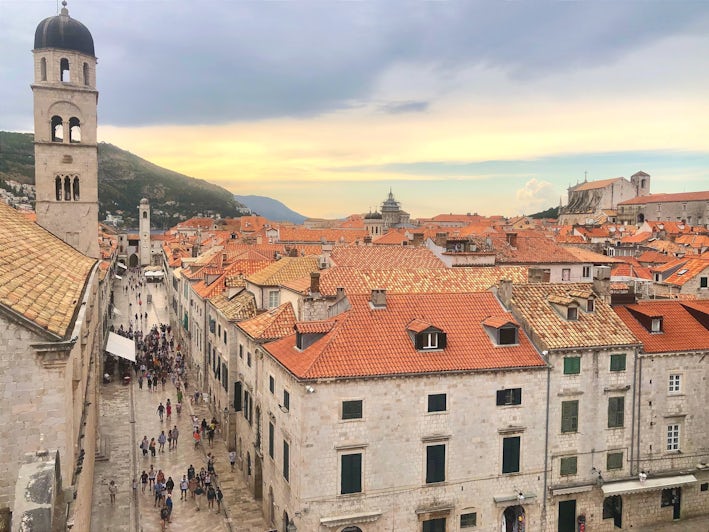
Known as the Pearl of the Adriatic, Dubrovnik is one of the most impressive and complete walled cities in the world. The intact city walls date back to the 13th century and run uninterrupted for more than one mile, completely encircling the UNESCO-listed Old Town.
You'll get the best view of the city's distinctive red-tiled roofs by walking around Dubrovnik's city walls. Nearly 20 feet thick in places, the fortifications were built to protect the city from attack and are dotted with lookout towers.
Guided tours are available, but it is easy to visit on your own if you prefer to go at your own pace; it takes around two hours to complete the circuit. Try to arrive as early as possible to avoid crowds and the midday heat.
Tip: The stone steps leading to the walls are steep and the walk is tiring in hot weather. For an easier option with equally panoramic views of the old town and harbor, take the Dubrovnik Cable Car to the top of Srd Hill.
Valetta, Malta: St John's Co-Cathedral
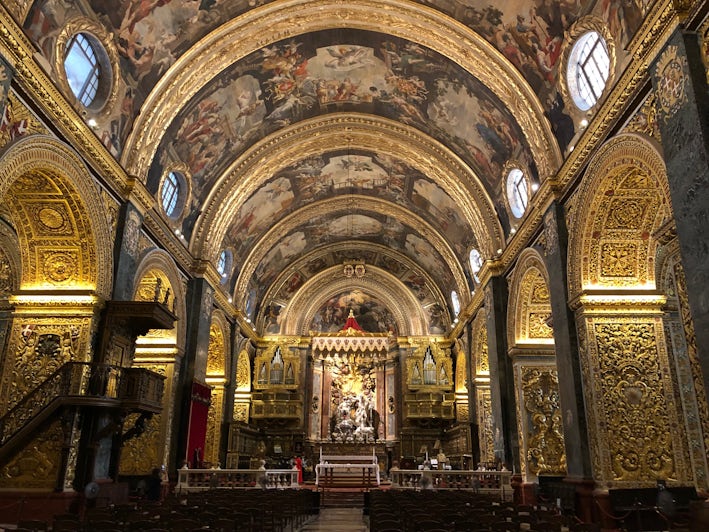
St. Paul, who was shipwrecked en route to Rome in AD 60, brought Christianity to Malta. Religion has played an important role in Maltese history and this is reflected in the 365 churches and chapels that dot the islands of the archipelago.
A highlight is St John's Co-Cathedral in Valetta, the capital city, where the rather plain facade hides a lavish and ornate interior. The structure was built between 1573 and 1577 by the Knights of the Order of St. John of Jerusalem, who ruled Malta for more than 200 years.
The knights donated art and money to enhance the cathedral's interiors, and the collection includes two of Italian artist Caravaggio's most impressive works: "The Beheading of St. John the Baptist" and "St. Jerome Writing." Caravaggio himself escaped the church authorities of Rome and fled to Malta in the 17th century, bringing his inimitable chiaroscuro technique with him.
Tip: Stiletto heels and narrow-heeled shoes are not permitted on the inlaid marble floor. Slippers can be purchased at the door.
Izmir and Kusadasi, Turkey: Ephesus
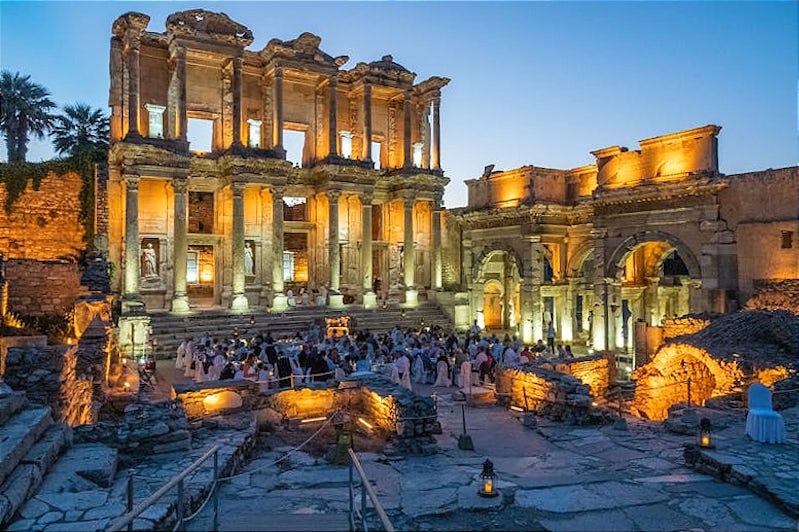
Ephesus is the best-conserved ancient city that can be visited on an Eastern Mediterranean cruise. The vast size and scale provide a real flavor what day-to-day life was like in the Roman Empire as it ruled over wide swaths of Turkey and the Middle East. Due to its strategic location on a trading route, Ephesus grew into the second largest city in the Roman Empire and most important commercial center in the region.
The Temple of Artemis, visited by Alexander the Great during its construction in 334 BC, was one of the Seven Wonders of the Ancient World. Although little remains of that temple, Ephesus contains many remarkable ruins, including the Library of Celsus, a large theater, private houses, mosaics, statues and frescoes.
Shore excursions are offered from the Turkish ports of Izmir and Kusadasi, and independent travelers can arrange for taxis to drop them off at one end of the city and collect them at the other.
Tip: Ephesus gets extremely hot in the summer so take a hat, water and sunscreen. Also make sure you have some small change as you have to pay to use the public restrooms.
Catania, Sicily: Taormina and the Greek Theater
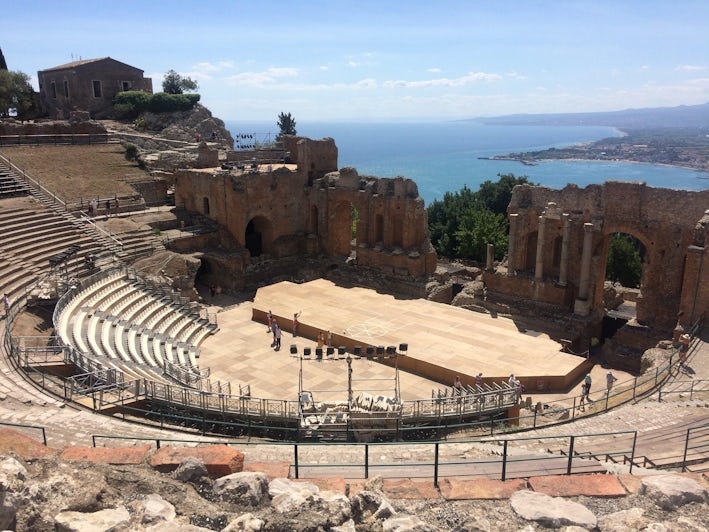
Sicily, with its primary ports of Palermo and Catania, figures on both Eastern and Western Mediterranean cruise itineraries. And either will give you a healthy taste of Southern Italian culture that is a striking contrast to northern ports like Venice.
If your cruise has an Eastern Mediterranean you may very well stop in Catania, which itself has plenty of history, culture, cafes and restaurants to explore. However, you'd do well to book a shore excursion to Taormina, about an hour or so up the coast.
Taormina itself is busy and buzzy (think: Mykonos Old Town), but the Teatro Antico di Taormina (Greek Theater) is your destination. It's only a 10-minute uphill walk from the center of town, but the rewards are worth it. In addition to a stunningly preserved amphitheater dating back to the 3rd century AD (with other construction from the 4th century BC), you're here for the views. The ruins, town below, coastline and Mount Etna are all ready for their close-ups from these heights.
Tip: Taormina is one of the most popular destinations in Sicily, meaning tourists and crowds can be the norm. If you're after a slightly more chill day, head to equally historic Ortigia Island in Siracusa, south of Catania.
Crete (Heraklion): Knossos
Considered by many historians to be Europe's oldest city, Knossos is the largest Bronze Age archaeological site on the Greek island of Crete. Although it's easy to explore the ruins on your own, it pays to have a guide who knows the stories and history of Knossos.
The home of kings, queens and an army of servants, the 1,000 rooms of the original palace were spread over four floors and connected by a labyrinth of staircases, corridors and secret tunnels. Formerly one of the most important cities to the Minoan civilization (which predates the Greek and Roman empires), it also figures in Greek mythology. Well-preserved frescoes make this an even cooler glimpse into the arts of the ancient world.
Tip: Follow up a visit with a trip to Heraklion Archaeological Museum, three miles away, which houses the palace's treasures, including art, jewelry and pottery.
Mykonos, Greece: Delos
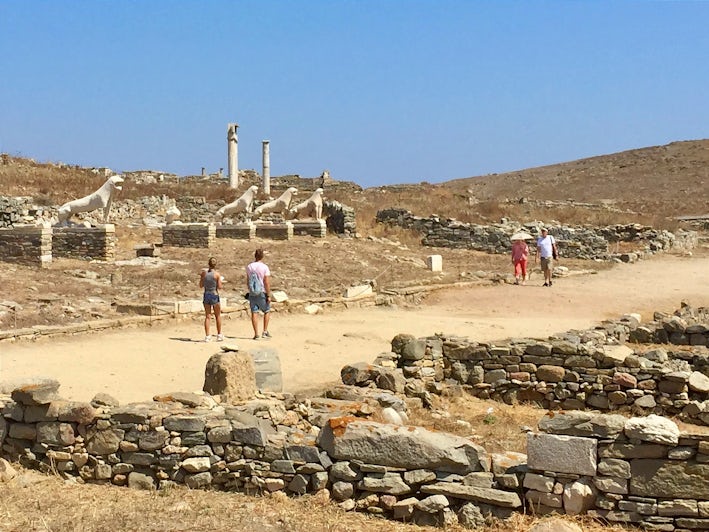
Believed by ancient Greeks to be the birthplace of Apollo and Artemis, Delos is a popular destination for cruises that port in Mykonos. The island saw successive waves of civilizations over the course of more than 3,000 years.
The Terrace of the Lions is one of the most photographed spots on Delos and was added to the island in the 7th century BC. Five marble lions are left today at the site. You'll also be able to explore numerous temples to deities from many civilizations as well as what is speculated to have been an ancient synagogue.
Delos makes a great alternative destination if the packed streets of Mykonos Old Town, or the beach clubs, aren't your style. Even so, the island of Delos is a quick boat ride from Mykonos, and if your cruise is staying overnight in Mykonos you'll have plenty of time to enjoy the more contemporary pleasures of the Cyclades Islands.
Tip: Shade is in short supply on Delos. Bring plenty of sunscreen, a wide-brimmed hat and water to keep yourself cool.
Ashdod or Haifa, Israel: Jerusalem Old City

Note: As of early 2024 cruises are not stopping in Israel due to its ongoing war. Should you cruise to Israel when sailings begin again, make yourself aware of the security situation before you go as it may affect your trip.
Holding thousands of years of history, Jerusalem is sacred to Jews, Muslims and Christians alike. It isn't on the sea, and thus doesn't have its own port, but is accessible from the ports of Haifa and Ashdod in Israel.
There are too many incredible historic sights in Jerusalem to catalogue here, and it's easily one of the most beautiful old cities in the world. A visit to the Church of the Holy Sepulchre is a highlight, where you're likely to spot bishops and Christian leaders from around the world holding offerings and ceremonies inside the reputed tomb of Jesus. Via Dolorosa also draws Christian pilgrims.
At the eastern end of Jerusalem's Old City is Al Aqsa Mosque and, below it, the remains of the Second Temple, the most important religious shrine for Jewish people (often called the Wailing Wall). The area in front of the Wailing Wall is an open-air synagogue with separate areas for men and women. People come to leave prayers written on pieces of paper and pushed into the wall, and you'll see several of the faithful there praying for hours.
The Wailing Wall is 200 feet long, but excavations have revealed that the majority of its original length — more than 1,500 feet — is hidden underground. These foundations, and the remains of ancient streets, can be seen on a fascinating guided tour through the Western Wall tunnels.
Visiting Al Aqsa Mosque is generally not possible unless you are Muslim and have a permit. However, access to the third holiest site in Islam is often restricted by Israeli authorities, who regularly prevent Muslims from being able to worship there freely.
Tip: In addition to observing modest dress codes in most holy sites in Jerusalem (no exposed shoulders or knees), the security situation is tense even in times of peace. You are likely to see armed soldiers all around no matter when you visit.